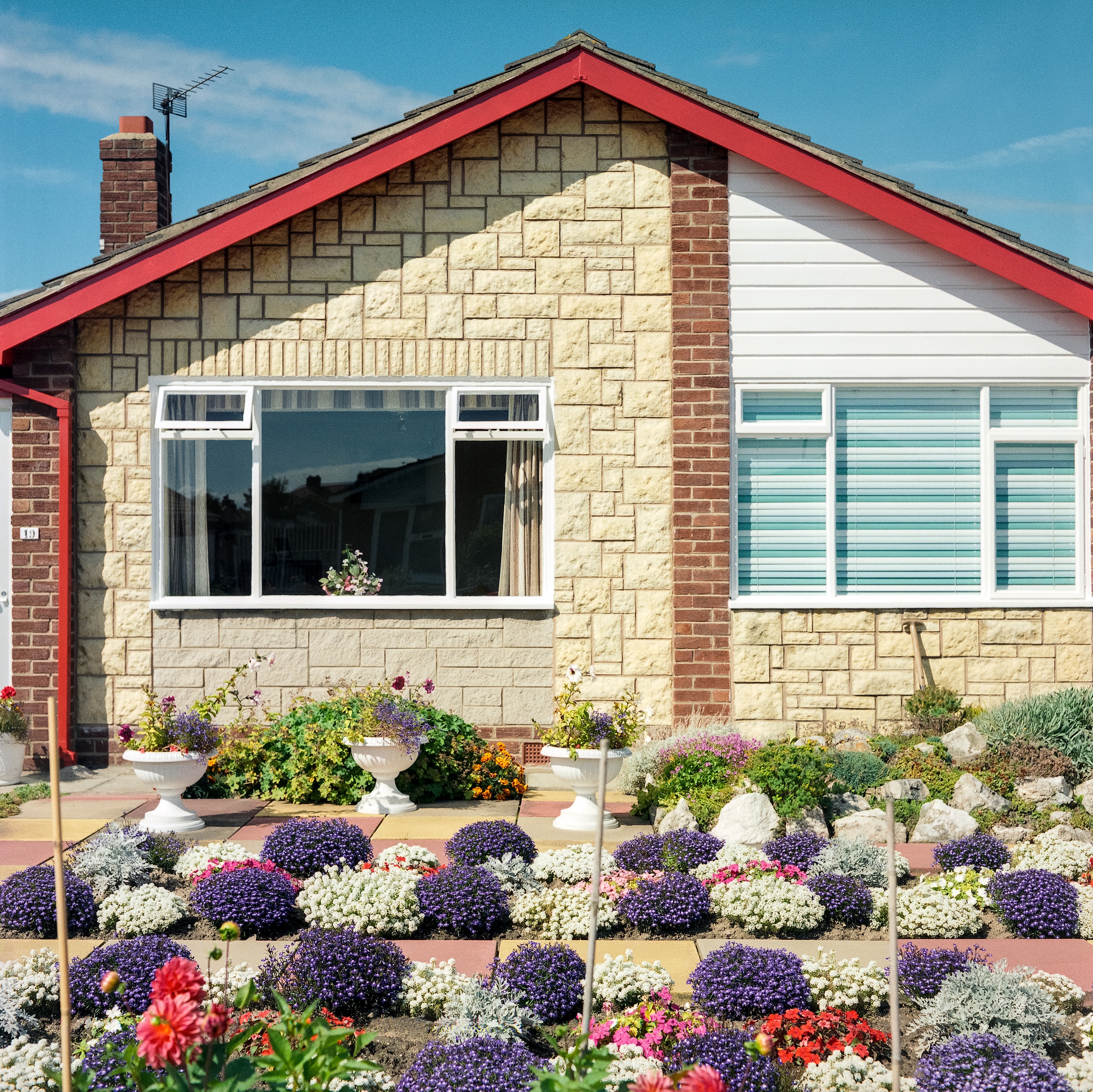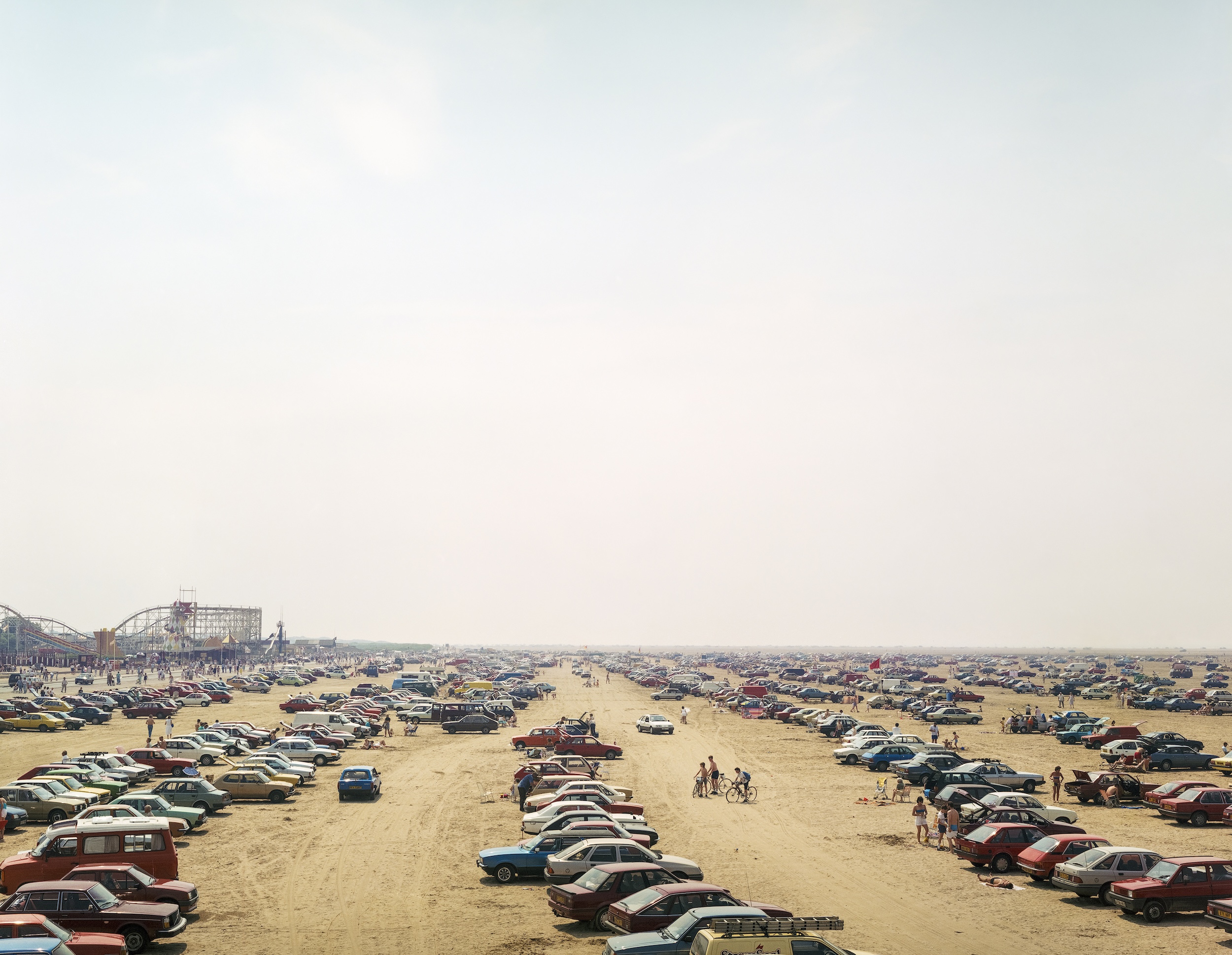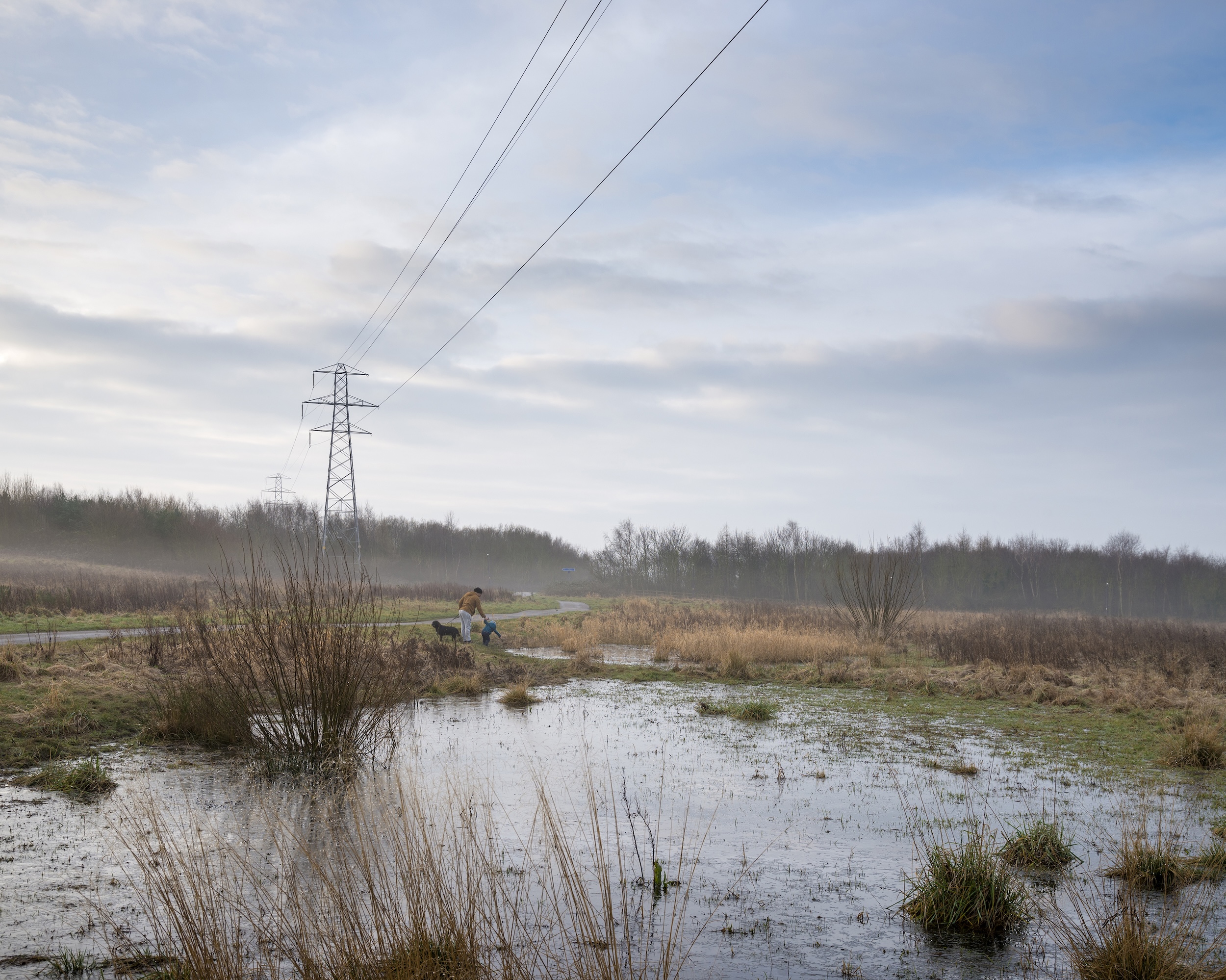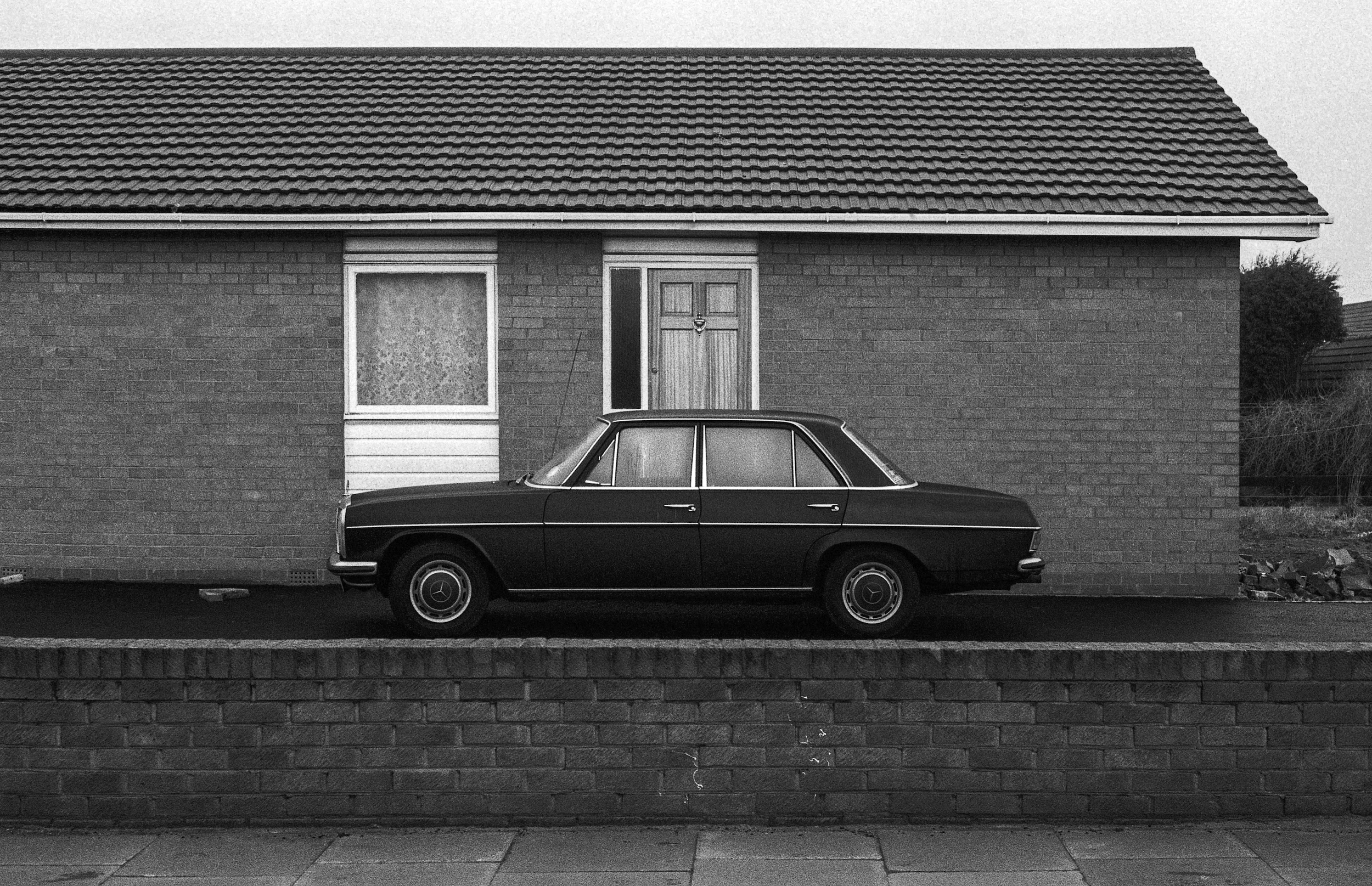From Housing Estates Set 2 (1980) © Stephen McCoy
Testament to staying true to one’s roots, Stephen McCoy’s Proximity is on show at the Martin Parr Foundation until 21 December
In 1970, Stephen McCoy’s family bought an empty plot of land. His parents had started married life in a small terraced house in Liverpool, but had expanded their set up over time as McCoy senior, Charles, was promoted at work. But Charles dreamt of building his own home, and the plot, on a housing estate in Ainsdale, near Southport, was his chance. “He wanted to do things for himself, and he was very capable,” McCoy remembers, adding that Charles did all the design, carpentry, plumbing and electrics himself.
Photographs of the house appear in McCoy’s exhibition, Proximity, at the Martin Parr Foundation. McCoy’s retrospective comprises multiple bodies of work from over four decades, including early images shot on skittish 35mm, and photographs on the slower 5×4 he favoured for most of his career. But constant throughout is his fascination for the ways we inhabit and imprint ourselves on our spaces, from the private habitats of home to ever-changing cityscapes.
Personal Space (1980–1984) is a study of domestic scenes in McCoy’s Ainsdale home and friends’ and neighbours’ living spaces. A witty take on the family snapshot “inspired by the idea of things going wrong, chopping off people’s heads and things like that”, it became an exploration of composition, form, and “the different ways an image can be structured”. Personal Space also laid the foundations for a practice rooted in deep connections to people and places. One photograph from the series looks down on McCoy’s father’s bald head, his mother’s stockinged foot cutting across the frame.
“She’d tied a knot in her tights because she’d got a ladder,” he explains. “Those tiny details are so important. And they can be missed if you don’t photograph them and don’t preserve them, they’ll be lost forever.”


“I never understood why people photograph strangers,” Stephen McCoy
The warmth and humour underpinning McCoy’s work is born of intimacy, of the proximity referenced in the exhibition title. “I never understood why people photograph strangers,” he says, a view strengthened by his time working on Skelmersdale (1983–1984), a deindustrialised and impoverished Merseyside new town. “It’s a troubled place,” he says. “I felt uncomfortable just going around, even though I explained to people what I was doing and obviously asked their permission. I felt like an interloper.”
After that experience McCoy decided to avoid portraiture, unless he knew the people involved personally. A workshop with Lewis Baltz led him towards the human impact on the landscape, though his work, shifting into colour, diverges from New Topographic deadpan detachment. River to River (1985–1990) explores land use between the river Mersey and the river Ribble, for example, while Demolition Sites (1981–1986) looks at transient locations that appeared and disappeared as Liverpool underwent regeneration. The Rimrose Valley (2016–2025) focuses on a country park in Sefton, meanwhile, under threat from a proposed dual carriageway.
People sometimes appear, but their presence is secondary in these series. “It’s not about them as individuals, it’s about their role within that bigger landscape,” McCoy explains. Even in Personal Space, few faces feature. “I wanted them to be… almost symbolic of anybody’s family,” McCoy explains. Even so, a specificity runs through his work. Everything is shot in Merseyside, where McCoy lives, some series over five or even 10 years. McCoy patiently revisits the same spots, working to understand the intricacies of each place.


Few people have the inclination or talent to construct a home from scratch, but we all shape the world around us, and nowhere is this more evident than in Every House My Mother Lived In (2019–2025), McCoy retraces his mother Rita’s life through buildings, photographing her at every one, right up to the detached home in Crosby where she recently died. Today, McCoy’s work takes on its own resonance.
“When you’ve been taking photographs for 45, 50 years like me, you have got to embrace that sense of time passing, that it will come to an end, that my ability to take photographs will end,” he says. “It’s not a question of looking back, looking forward. Here I am in the present. If someone sees one of my photographs from 45 years ago for the first time, it’s contemporary for them.”

Stephen McCoy: Proximity runs until 21 December at Martin Parr Foundation, Bristol. martinparrfoundation.org

